[ad_1]
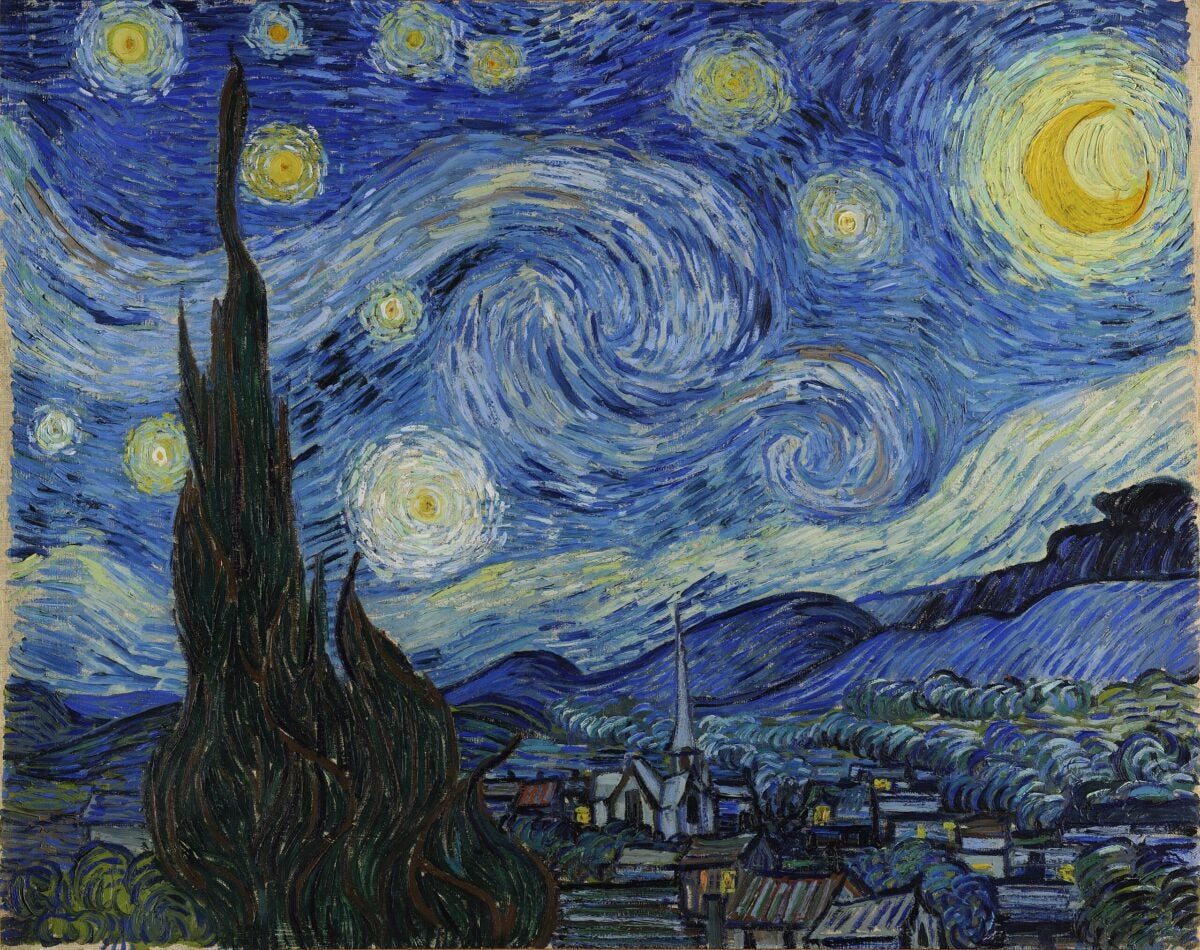
Long before any equations described it, van Gogh’s linseed oil and stone pigments depicted the turbulence behind twinkling stars. Credit: Museum of Modern Art/Google Arts & Culture/Wikimedia Commons
Turbulence abounds in nature, from the spinning whorls of hurricanes to the brilliant swirls of Jupiter’s immense storms. Astronomers have even observed it where stars are born in the vast maelstrom of molecular clouds. But much as scientists have tried, no single theory has ever captured the full scale and unpredictability of turbulence. Nobel laureate Richard Feynman once called it “the most important unsolved problem of classical physics.”
Yet, a study released today in Physics of Fluids shows that the artist Vincent van Gogh captured theories of fluid dynamics in “The Starry Night,” depicting complex patterns of turbulence at large and small scales. Scientists say that the revered oil-on-canvas work, painted in June 1889, captures details that adhere with amazing fidelity to the physical laws of turbulence — laws that would not be formulated until 52 years later.
Turbulence in the atmosphere causes the phenomenon that astronomers call seeing; as light passes through eddies in the air, it is refracted, causing images to blur and stars to pulsate in brightness. In other words, whether through uncanny intuition or meticulous observation, van Gogh’s dynamic rendering of whorls and starlight captured the very physics that cause air to swirl and stars to twinkle.
Ironically, van Gogh considered “The Starry Night” a failure. To save on postage, he skipped sending it with other paintings to his brother Theo, an art dealer, for public sale. Today it is one of the most recognizable and acclaimed paintings in Western art.
It has also become a matter of considerable scientific interest. For the past 16 years, fluid dynamicists have debated in research papers whether “The Starry Night” truly reflects the mathematical structure of turbulence, or, like many other works — including Edvard Munch’s “The Scream” — merely imitates it.
“Our findings settle the ongoing debate about whether the dynamic sky in this renowned painting is reflective of true physical phenomena,” says study co-author Yongxiang Huang of Xiamen University in China.
Art’s starring role
Created a year before van Gogh’s death as the artist sat in an insane asylum in France, “The Starry Night” pictures outsized twinkling stars and a crescent Moon amid a swirling chaos of azure sky. Like many impressionist paintings of the time, it uses “broken color” — the technique of placing distinct colors next to each that appear similarly bright, creating a dramatic, pulsating effect of flow and movement.
Meanwhile, scientific understanding of turbulence was lagging. It wasn’t until half a century later that Russian physicist Andrey Kolmogorov penned the first equations to describe turbulence.
Kolmogorov described how energy cascades from large eddies down to smaller eddies, a phenomenon that can be observed in nature. For instance, in low-resolution images, Jupiter’s Great Red Spot appears to be a single large whorl. But zoom in, and you’ll find ever smaller eddies, feeding off of the energy of the larger ones.
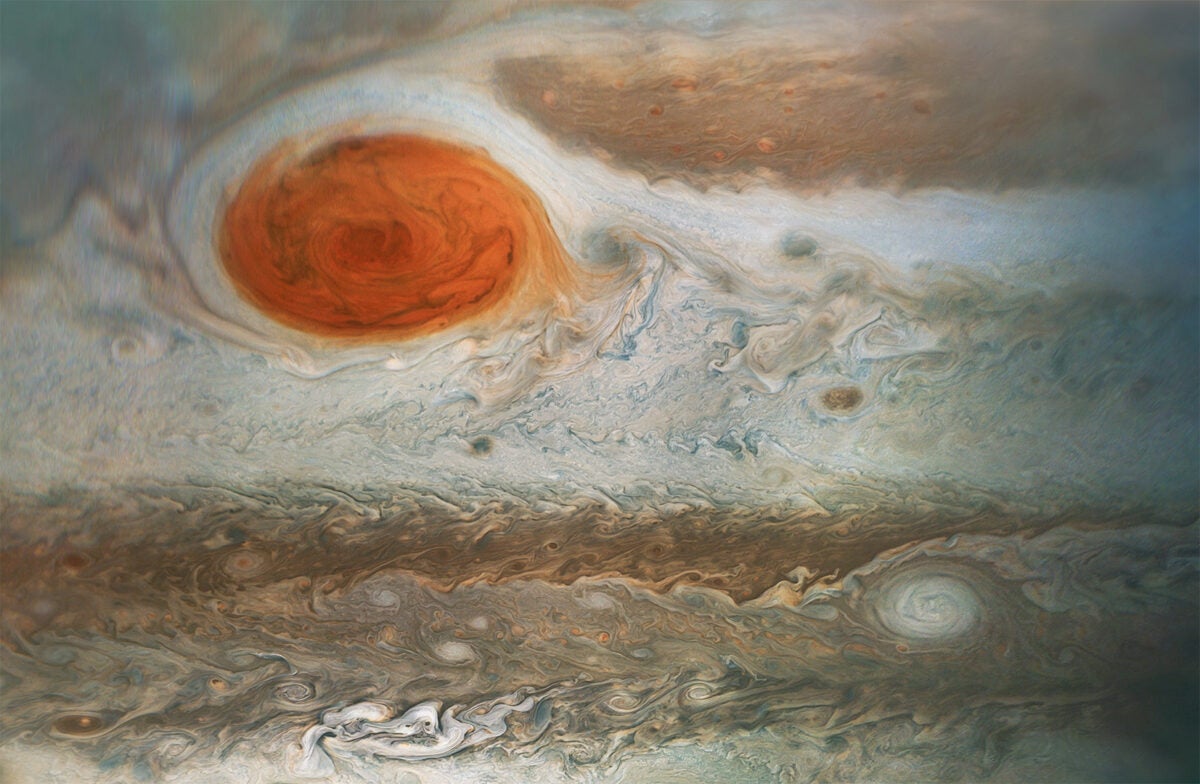
Huang and his colleagues analyzed all 14 major swirls in “The Starry Night.” Unlike previous teams that also searched for turbulence in “The Starry Night,”they focused on just the swirls, masking out the rest of the sky. They then measured the variations in brightness across each of them to see if they matched those predicted by theory.
Remarkably, van Gogh passes with flying colors. Kolmogorov’s equation predicts that energy falls across different sizes of eddies in the form of an inverse power law with an exponent of –5/3, or –1.67 in rounded decimal form. The new work finds that the eddies in “The Starry Night” obey this law with remarkable precision, with an exponent of –1.67 or –1.68 (depending on whether you’re measuring across or up and down) — with associated uncertainties of 0.13 and 0.19.
In “The Starry Night” and its dynamic sky, “the arrangement of the eddy-like formations crafted by van Gogh resembles the energy transfer mechanism in real turbulent flows,” the authors write.
Science imitates art
Because turbulence has eluded mathematical description for so long, physicists throughout history have admired artists’ ability to capture its appearance in nature. In fact, the first use of the word “turbulence” applied to the flow of fluids appears in writings by Leonardo da Vinci, who performed exacting studies of water flow.
However, under scrutiny, many artistic works that illustrate turbulence don’t correspond to the scaling that Kolmogorov predicts. That includes da Vinci’s water sketches, as well as Edvard Munch’s “The Scream,” with its undulating, uneasy sky.
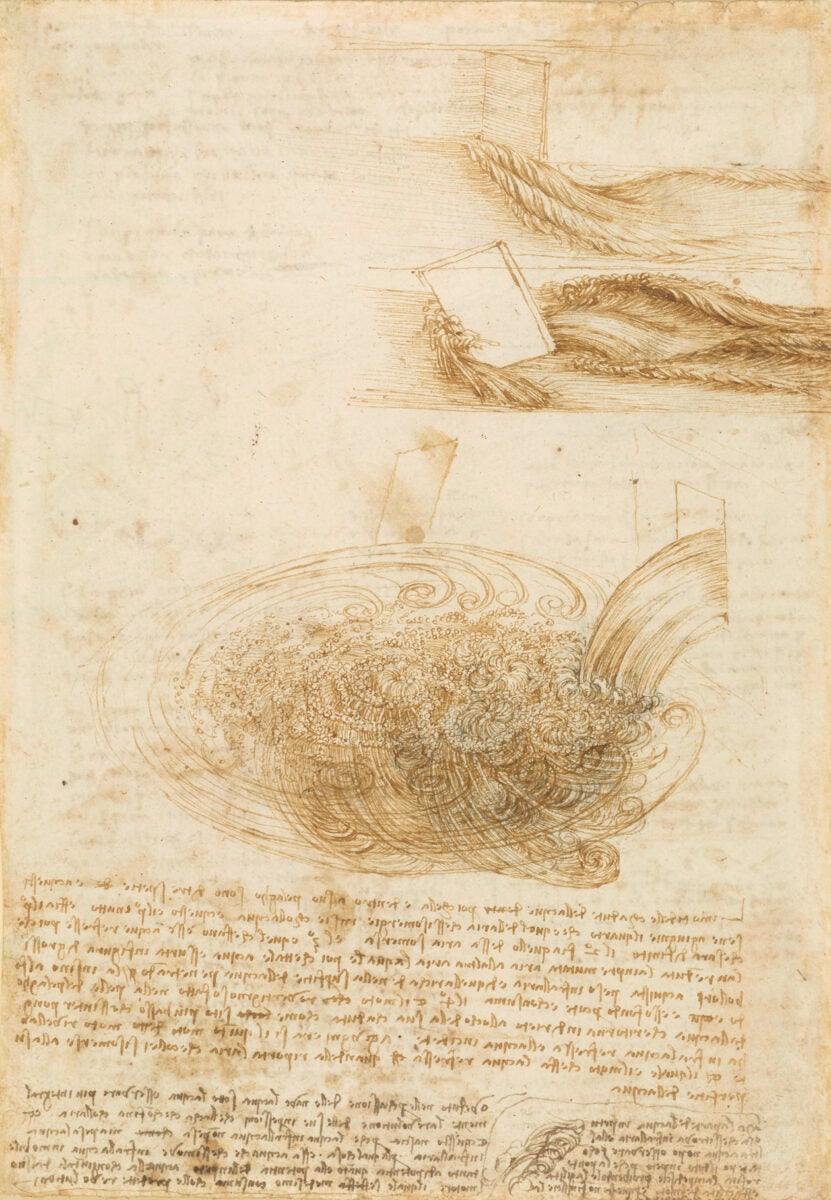
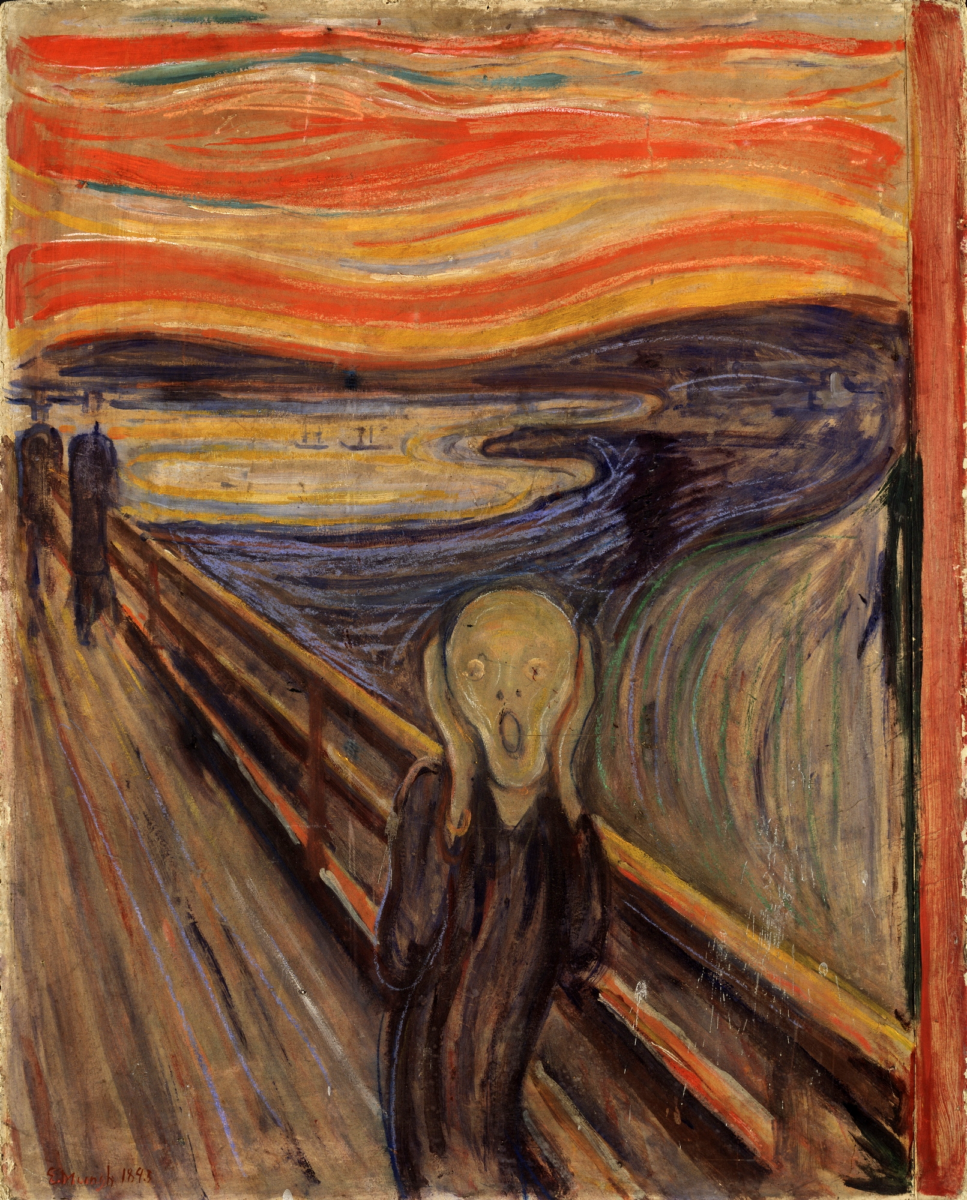
In addition to the Kolmogorov-esque turbulent structures that van Gogh depicts in “The Starry Night,” there is another aspect of turbulence represented in the painting, the new study finds. The team found that on smaller scales — comparable to the width of a brushstroke — “The Starry Night” corresponds precisely to a different scaling relation formulated by Australian mathematician George Batchelor, one with an exponent of –1.
While Kolmogorov’s equation defines how energy is distributed across eddies, Batchelor’s relation describes how turbulence mixes a fluid on smaller scales. (This mixing can be visualized by releasing a dye or paint into a turbulent flow.) The team says that the appearance of Batchelor scaling in “The Starry Night” is related to the mixing of the paint itself — linseed oil and stone pigment pulled across the canvas in van Gogh’s quick brushstrokes.
“The most exciting aspect of our study lies in the simultaneous observation of the Kolmogorov and Batchelor scales,” says Huang.
Fluid dynamicists have long sought to simultaneously observe Kolmogorov and Batchelor scaling in lab experiments. But this is difficult, Huang says, because it involves observing very large-scale and very fine-scale structures at the same time. But the fact that both can be observed in a work of art could inspire new approaches to lab experiments, the authors write.
[ad_2]
Source link


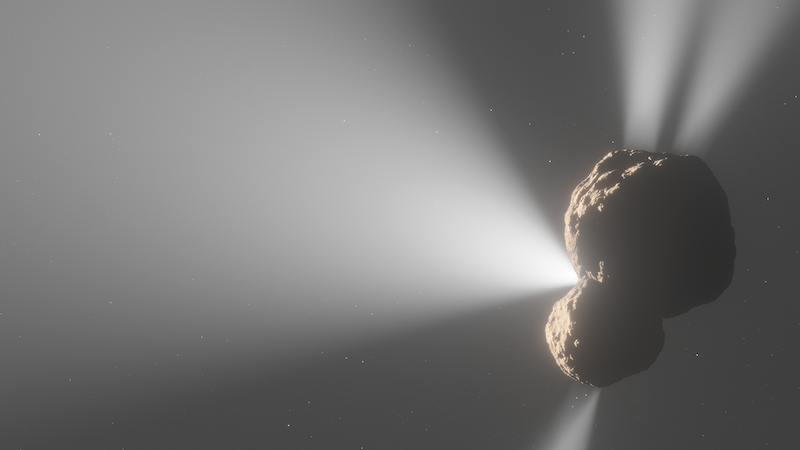
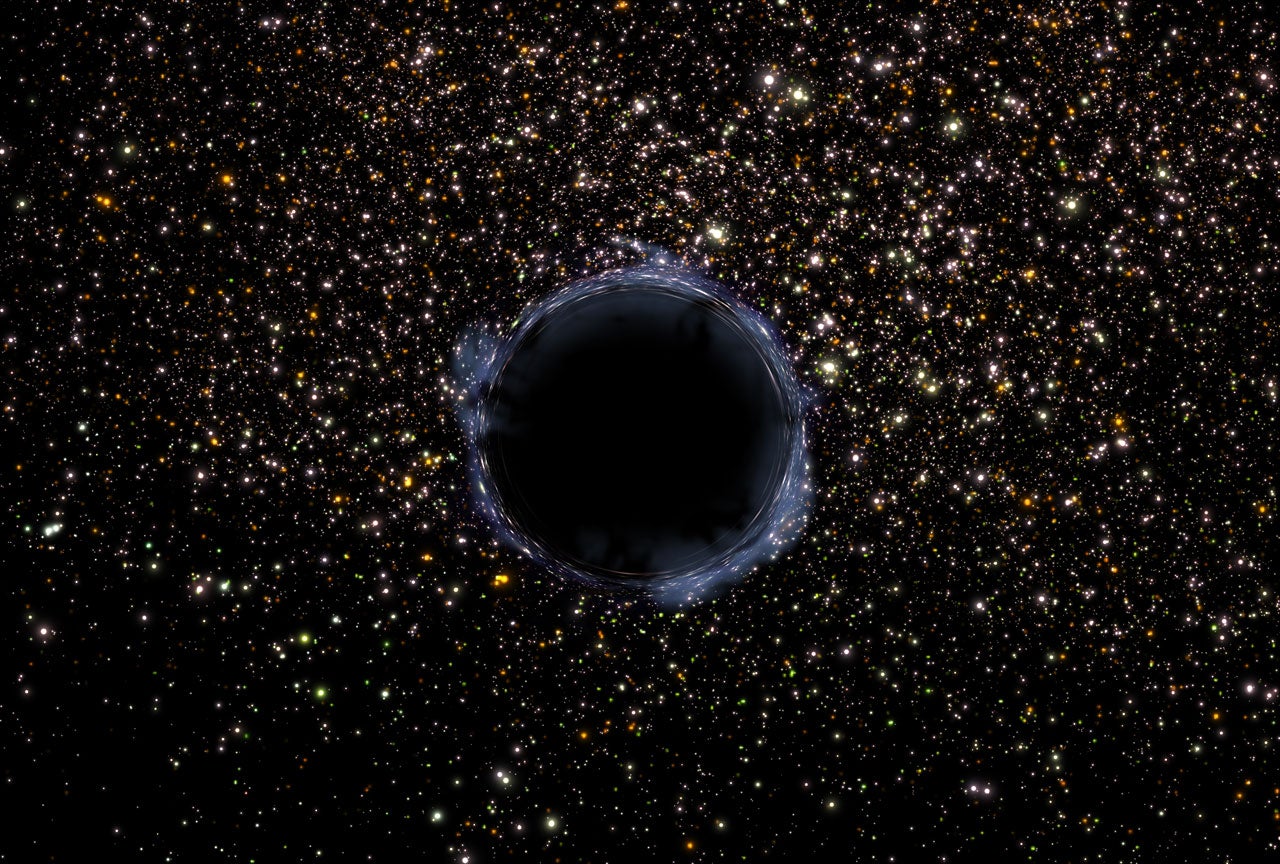
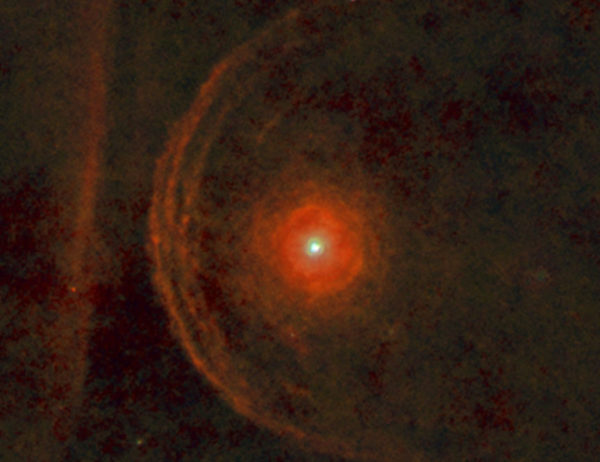
No comments! Be the first commenter?